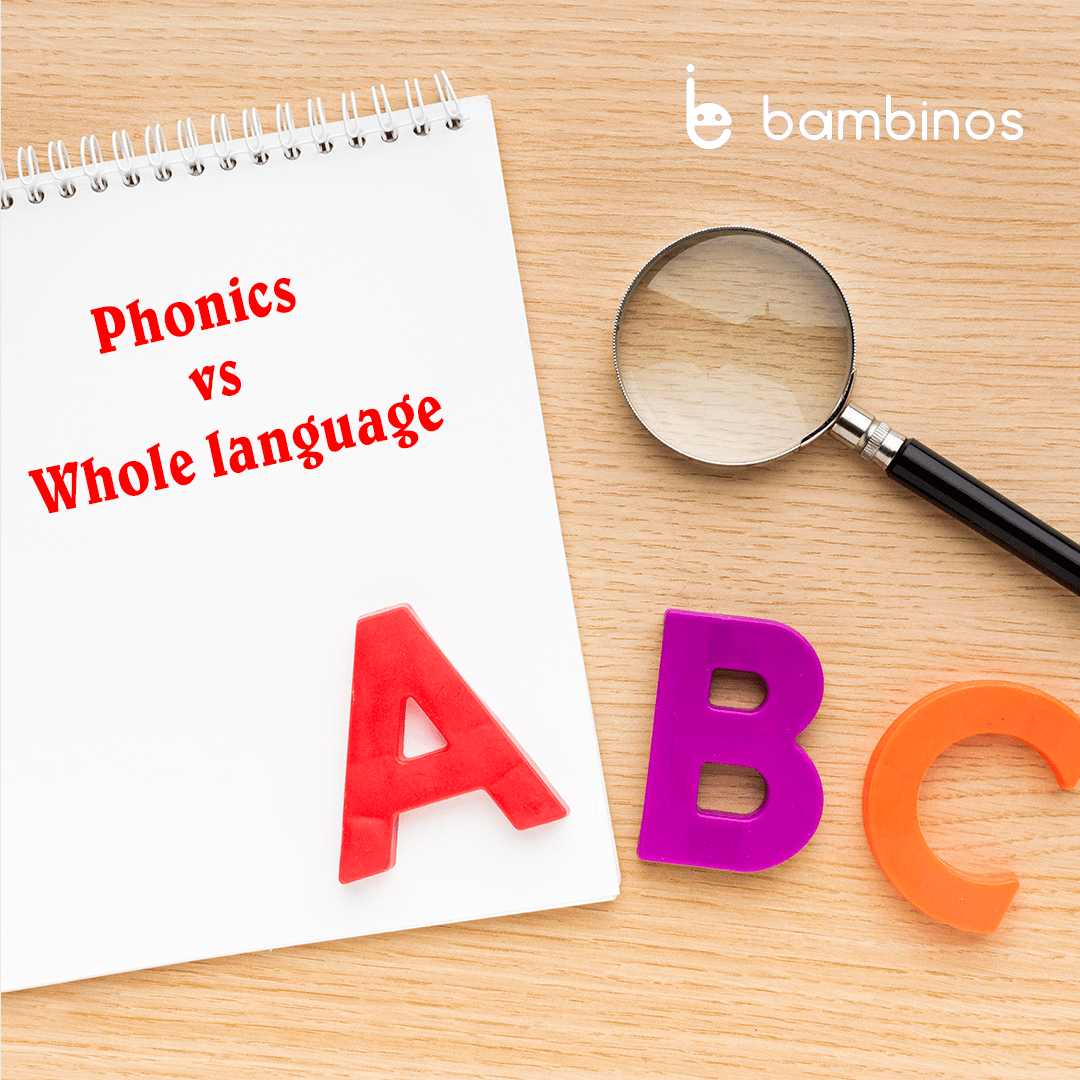Please enter the code we just sent to whatsapp 91-11-46710500 to proceed
Didn't Receive OTP?

The issue of why or how it might work has been a bone of contention in education circles and the halls of literacy experts for years: phonics or whole language? These are two very different teaching reading methods, which are like rival superheroes, each on their own are strong and weak. Phonics campers like to teach children to decode words by sounding them out while whole language adherents stress the need to understand words in the context of sentences and stories. But the ultimate question remains: It is the question: which is the best reading approach for kids? So let’s get into this lively comparison to find out what?
What if every letter was a puzzle piece to a bigger puzzle? That’s how phonics works. It helps kids learn to associate letters or groups of letters (graphemes) and sounds (phonemes). For instance, a child is taught that the 'b' makes the 'buh' sound, and if you couple it with 'a' and 't,' that becomes ' bat'. Simple, right?
Its approach is systematic, straight down the line. It provides children with the means to successfully crack the code of language. When kids learn the patterns in words, they can then feel confident in attempting unfamiliar vocabulary. This is particularly useful for new readers just about to embark in the magical world of reading.
Structure and Clarity:
Phonics provides a straightforward step by step guide to help children learn and parents understand.
Decoding Skills:
It focuses on spelling and pronunciation rules to help children to read new words without help.
Proven Success:
Phonics works wonders for children with dyslexia or other reading challenges, research indicates.
However, phonics isn’t without its critics. They say it seems somewhat robotic, and disconnected from the joy of reading. Of course, it’s perfectly possible that reading ‘c-a-t’ over and over again will not make every child start loving stories.
Read more: Difference between Jolly Phonics and Regular Phonics
While phonics is considered the science of reading, Whole language is the art. It’s about making kids read meaningful texts rather than making them hear and not break words into sounds. Suppose you show a child a picture book in many colours and then hand them a piece of paper with scrambled up words, and have the child guess what words mean, as they read the pictures and story. Sounds fun, right?
Whole language concerns ‘the bigger picture’. Reading is a natural part of the process from exposure to everyday words to the most detailed understandings of high level passages—in fact, reading is a part of learning to speak. Advocates for this approach claim that kids will naturally learn to spell, vocabulary, and grammar if they are shown enjoyable stories, poems, and songs.
Love for Reading:
The stories and literature are whole language and have great respect for them and then the writing stimulates creativity.
Contextual Learning:
If children learn words in ‘real life’ scenarios then reading is more practical and relatable.
Flexibility:
And it’s not rigid, which can be freeing for kids who want less order.
But hold on! Whole language is not all that perfect either. The method's proponents believe it leaves too much to chance. The child who doesn’t have a good reading foundation in phonics may not be able to read unfamiliar words or he might develop bad reading habits.
But, in the battle of which reading method is the strongest for teaching reading, which approach wins? Phonics or Whole Language. Let’s break it down:
|
Phonics |
Whole Language |
|---|---|
|
Highly systematic |
Open-ended and flexible |
|
Focus on decoding |
Focus on meaning and stories |
|
Helps kids to sound out words. |
Relies on context clues |
|
Early readers, struggling readers |
Creative, language-rich environments |
Surely, both approaches are strong. While Whole language develops love for literature and phonics is great for building a strong foundation.
You don’t have to choose one when you can have both. Thus, into the picture comes the approach of balanced literacy, a concept which combines the frankness of whole language and the precision of phonics. Think of it as a recipe: Whole language adds the spice so each child has a base while phonics acts as the main ingredient.
1. Start with Phonics: Show kids how to recognise letter–sound relationships.
2. Introduce Whole Language: When they are well equipped with the basics, then place them in books, stories, and real world texts.
3. Blend and Adapt: Each child learns in their own way, so tailoring the approach according to each child’s learning style helps to develop the required technical and intuitive reading skills.
In Phonics vs. Whole language grand battle there is no one winner because the real champ is the kid who learns to read. Both the methods give us some very useful tools, but neither of them is perfect by itself. Phonics and whole language methodologies are far more effective when combined together because each one fills in the weaknesses of the other and each enhances the strengths of the other as well.
So, if you’re a parent or a teacher pondering the best strategy, remember: It’s not about choosing sides. This hybrid approach is supported by research showing that it yields best results for the young readers. It merges phonics’ reliability with Whole languages emotional connection making sure that kids grow into confident and enthusiastic readers.
Whole language builds the imagination, while phonics lays the foundation, and together they unlock a lifetime of reading joy. After all, isn’t that what learning is all about?
Shape Your Kid's Future with Bambinos Classes | Bambinos.live India's No. 1 English Communication Platform For Kids | Click here to Book a Free Class Limited time offer.